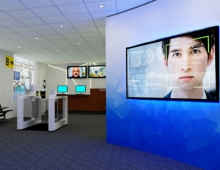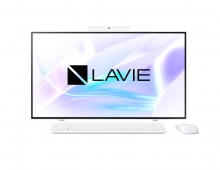
New Technology Reduces LSI Power Consumption by 50%
NEC announced the development of an important new technology that is able to "visualize" the thermal distribution and reduce the power consumption of LSI, which has become an increasingly serious challenge as the miniaturization of LSI continues to advance.
These latest developments have been demonstrated through NEC's SX-9 super computer.
The new technology features scores of thermal sensors, 1/10 the size of previously available sensors, which are internally located throughout the LSI, and convert temperature changes into digital signals that enable the heat distribution of the LSI to be "visualized" in real-time. The miniaturization of the thermal sensors enables them to be widely distributed throughout the LSI, which increases the precision of measurements.
Thanks to the development of technology that allows thermal distribution to be "visualized," independent local measures can be taken on specific regions of an LSI chip in order to control heat. This allows tasks to be delegated to less active areas of a chip, which reduces the total amount of electricity required for operations and lessens the environmental impact. Specifically, the widespread use of devices equipped with this latest technology and LSI multi-cores will result in greater optimization of clock-frequency, data processing and voltage levels, which will deliver a 20 - 50% reduction in the power consumption of LSI devices.
The technologies that allow an LSI's temperature distribution to be "visualized" are considered an essential part of the development of a "Data Center On Chip" that will enable LSI of the future to perform similar functions as the data centers of today.
NEC formally announced these latest achievements on June 20 at the "2008 Symposia on VLSI Circuits," held in Hawaii, USA from June 18 - 20.
The new technology features scores of thermal sensors, 1/10 the size of previously available sensors, which are internally located throughout the LSI, and convert temperature changes into digital signals that enable the heat distribution of the LSI to be "visualized" in real-time. The miniaturization of the thermal sensors enables them to be widely distributed throughout the LSI, which increases the precision of measurements.
Thanks to the development of technology that allows thermal distribution to be "visualized," independent local measures can be taken on specific regions of an LSI chip in order to control heat. This allows tasks to be delegated to less active areas of a chip, which reduces the total amount of electricity required for operations and lessens the environmental impact. Specifically, the widespread use of devices equipped with this latest technology and LSI multi-cores will result in greater optimization of clock-frequency, data processing and voltage levels, which will deliver a 20 - 50% reduction in the power consumption of LSI devices.
The technologies that allow an LSI's temperature distribution to be "visualized" are considered an essential part of the development of a "Data Center On Chip" that will enable LSI of the future to perform similar functions as the data centers of today.
NEC formally announced these latest achievements on June 20 at the "2008 Symposia on VLSI Circuits," held in Hawaii, USA from June 18 - 20.





















